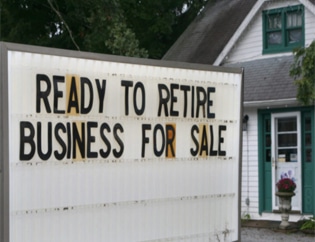State of Play: The Power of Bricks and Mortar
Published 4:55 am 8 Feb 2021
Hi there, and welcome to our fortnightly State of Play. Well I feel like, and this may just be anecdotally, things may be getting better. It seems like the numbers are coming down in Melbourne, but I always just go on gut and people in the streets feel a bit better. People are upbeat. And maybe it is that things are getting better, or maybe it’s just that we’re desensitized. Whenever we’re in a time of uncertainty at first it’s fight, flight, or freeze, adrenaline, you’re just in high alert because there’s danger, because uncertainty or change puts our amygdala, that part of our brain that deals with high stress, changing situations, and senses danger, and it’s there for our preservation and protection, it kicks into overdrive, but it can only operate in bursts. So it floods our body with adrenaline, and then there’s only so much you can take.
And then after an adrenaline high, if you’ve ever had one, and you’ve got that pumping through your system, you feel like you’re 10 foot tall, bulletproof, and you’re just in reactionary mode. And after that adrenaline has flooded your system, you are exhausted. So if you’ve ever been in high stress and then you come through the other side, it’s just, letting go. Maybe we’re all at that stage now, who knows. At the end of the day, though, there’s a potential for a vaccine, we’ve learnt overnight, and the Australian government’s cut a deal and Australians will all get a vaccine, if and when testing proves we have one, and they’re saying maybe next year. Doesn’t really change things for now, but does give us some hope. And what we’re all craving for is just, what is the end game? Not that we’re ever going to come out the other side and things go back to normal, but how does it end?
And I suppose it doesn’t really end. We just evolve and change and roll with it. So one of the things that we’ve been talking about and waiting for was the numbers. So publicly listed companies have to report their numbers around this time of year, and as expected, there were winners and there were losers. And some of the losers, as you would imagine, was Qantas. So massive, $2.7 billion loss, but a lot of the industry, for example, airports are down and they’ve made 97% losses. And when you think about apparently Canberra Airport saw 8,000 passengers a day pass through the nation’s capitol, and now it’s under 100. So with those sorts of numbers, just dropping off a cliff like that, you’re always going to see losses. Other losers were Lendlease. They said house and land packages were going gangbusters with home builders, but apartment sales were less than 50%.
So reporting profits, just not as great as they thought and projections having to be almost halved. That was across the board, not just Lendlease, but Mirvac, as well, reported losses. And obviously with a lot of commercial on office space and development and building, and the market not being what it was, they’re reporting losses there. Where all eyes were really headed, though, was what was happening with our banks. So over the last week the banks have reported their earnings, and whilst they’re still in profit, the profit is not as great as predicted and when compared to the previous year’s profits, they’re down, their profits are down. So they’re calling it the third quarter in terms of banks reporting numbers. So their third quarter numbers were, Westpac was $1.32 billion, and they set aside $826 million of that for bad debt. So most of their earnings they’ve set aside to cover mortgage defaults.
The total loan impairment provisions for Westpac were up 10%. So they’ve upped what they’ve kept aside for bad debt overall. And it’s up 574 million in this quarter. So that means the total that they’ve kept aside for impaired loans is $6.3 billion. Impaired loans means delinquent loans or loans that have been defaulted on, not just deferred payments or late payments, but loans that they see as toxic debt. We’re never going to get our money back, we’re going to have to write those off, so we have to have the funds to cover that. And yes, they over estimate, it’s a contingency or a buffer if the worst case scenario happens. ANZ also, overnight, revised their figures for delinquent debt or impaired loans, so an extra $500 million set aside for that. NAB and CBI had a fall in profit from last year, but they left their loan impairment buffers the same this quarter.
So as they’re ringing people up and saying, “Hey, you’re six months, where the government and the Australian Banking Association allowed you until September to start making home loan repayments, you’re going to have to start making repayments.” As they’re trying to get people back on track, they’re pretty much satisfied that what they predicted is coming into play. And that was, as the most recent reported data, one in five people were resuming repayments on their loans. They reported it the positive way. So 20% of people have said, “Okay, we panicked. It’s not as bad as we thought, we stopped paying our mortgage but now we’re ready to pay again.” But 80% of people have said, “No, I still can’t pay.” That’s going to be something that the banks are working out with customers on a case by case basis.
So they may get an extra four months’ extension. Come 30th, 31st of March next year, everyone will have to start repaying. So what the banks and what [inaudible] have said is you can’t just have people not paying their loans. That’s irresponsible, and it’s not fair on people in debt. So if you’re in a hole of debt, stop digging. It feels good for the short term not to make repayment, but that debt doesn’t go away. It just keeps mounting and the bill gets bigger and bigger. And if there’s no light at the end of the tunnel, it’s not fair to keep people on the hook and tether them to debt for life. So loan deferrals are continuing for now, but there is a real line in the sand come 31st of March.
The other bit of news, and in terms of the banks some of them paid a dividend, like Westpac, but ANZ for example said, “We can’t afford to give a dividend at all. We’ve got to keep everything because these are uncertain times, so responsibly to stay afloat and ensure that we mitigate against losses we need to not pay a dividend and keep our cash.” Cash is king. So they’re keeping all of their profit and allocating most of it for impaired loans.
In terms of the home builders grant, so that’s the $25,000 grant that the government is giving to people who are building, either building new homes for lower income earners or alternatively who are doing major renovations, anything over $150,000 in terms of renovations. And not to investment properties, it has to be to your home. So what that has meant is that there’s definitely been a spike in inquiry, there’s a lot of interest and a lot of people wanting to take advantage of the grant, but not so many following through on that. So a lot more foot traffic and a lot more inquiry, a lot more tenders and quotes going out there, but not actually converting into actual builds.
And some of the, overnight some of the big companies like Lendlease and Mirvac have supported and said to the government, why don’t you allow home builders for people buying a brand new unit? Why do they have to buy a house and land package, or build a house, to be able to take advantage of that? So in terms of building and construction, they, in the June quarter there were nearly 26,000 quotes sought. For the same period last year, so April, May, June, people only sought 12,800 quotes for home building, but the conversions were lower. So the building industry works on 20% of quotes converting to actual contracts for builds. And that hasn’t happened, it’s down to 15%. So of all the quotes, only 15% went ahead.
And the confirmation time, so the conversion time when they actually quote and say, “Yep, I’m going to go ahead with that,” and they sign off and it becomes a binding contract. That’s taking longer at nine weeks instead of seven. Now that could be, a) people are uncertain and they want to have an each way bet or they’re waiting till the last minute. Or it could be that banks are taking longer to get paperwork through and to lend money. Or a whole lot of other factors, but those seem to be what people are pointing to. The home builders grant, that 25,000, though, finishes. The line in the sand for that one is the 31st of December, and it’s not enough to just sign a contract and start building in two or three years’ time. You have to actually commit, but start doing the work before the 31st of December. So it means that there will be, and what the government is hoping for, a rush of people going to buy properties. It probably won’t change things.
They’re probably people who were on the fence anyway, who were looking. It probably won’t be people who it would never even occur to them, who said, “Hey, we’ve got five months left. Let’s go out and buy a house and land package, or let’s do a major renovation.” It’s people who may have said, “You know what? I’ll wait because things are uncertain,” who are now saying, “Well, if the grant’s there and it’s going to expire in December, we may as well just go ahead and do it,” which hopefully will create more jobs and get economic activity happening. Doesn’t seem to be helping the smaller players, the smaller builders, though, and a lot more competition in the market, which means prices are lower for construction. So the average value of the work is lower. It’s down 20%. So of the quotes that are going through, the average is $146,000 for the build or for the building work. It was last year, for the same period, 22% higher.
At the end of the day, though, there seems to be, in my view and from speaking to experts if you’ve been following our live stream, there’s a lot of the experts and economists, not just Australian but global, seem to think that land is a safe bet. When everybody is scared in the lows of a market, bricks and mortar tend to prevail. If you think of the game of Monopoly, and it was actually, interestingly enough, developed as a child’s game in 1904. It’s credited to Charles Darrow, who sold it to Parker Brothers, the concept of it, in 1934, as part- during the great depression to give people the feel of money and the excitement of commerce and economies whilst they were sitting at home and unable to afford very much.
However, it was actually patented back in 1904 by Elizabeth Magie. So she was a feminist and an entrepreneur, and very big at the, around in, born in the 1880s, but big in empowering people to take control. And she said, this was a game that was good for children and young people because they learned that the quickest way to accumulate wealth and gain power is to get all the land they can in the best localities on the Monopoly board and hold onto it, and patented her version of the game, which was the precursor of the modern day Monopoly, because she said she wanted to teach children how to, how business and commerce works.
So if you look at the game, most of us have played the game, what happens is we go round and round the board, and that’s a function of time. And every time we pass go, we collect $200. So we get paid for our investing our time and just grinding it out, going round the board. So that’s equivalent of nine to five. And yeah, you can get $200 every time, and you rest assured every time you pass go you get that cash in hand. So that’s a certainty, however, what you do with it counts.
So they’ve also simulated into the game luck. So you can take a card, a chance card. And what happens then is you can get an inheritance or you can lose money, or you can go to jail and lots of stuff can happen, and you’ve got to roll with the punches. But the purpose of the game, and you’ll note, the winners of the game are the ones who invest in property and buy up, especially the best property around the board and hold it and improve it. Put infrastructure on it, houses, hotels, and that’s the way to get ahead and win in the game of monopoly.
It has, in recent years, become less about buying and improving and manufacturing capital growth, and more about just waiting for the market to do the work. So over time, people have speculated in property and they’ve got in and they’ve ridden the market up and they’ve got out. We always regret the ones that we let get away, and if we think back 20 years, we think I wish I had held onto that property. And it seems with coronavirus and a changing market, we’re going to get an opportunity to get back in again, because in the game of monopoly, the board has been swept clean, or at least will be come the 31st of March, because it will be a level playing field again. It’s been a long time in Australia since our property market corrected, as it will, and now will be the time to skill up and to get into the market because that’s the only way to really leverage time and money to do more with less.
So because of that, and because now is the time to do that, I’m going to hold a special live stream, and you may have already registered for it. But if you haven’t, I’ll be sharing more on strategies for the current market. These are cutting edge strategies for now. So it’s our Recession Success live stream, and it’s on the 22nd of August. I’ll put this link in the comment section and the description section here. If you go to that link there and register, we’re going to have Robert Kiyosaki, so he’ll be sharing his experiences in property. And if you’ve read Rich Dad, Poor Dad, which he wrote the 1990s, but is more true today than ever, now is an opportunity or a reset where entrepreneurs can get into the market and free themselves of the tethering to time, the 24 hours in a day of just going round the Monopoly board and paying rent, or as Elizabeth Magie called it the landlord’s game.
Because if you’re stuck in that rut, then it’s dead money. You’re not investing or leveraging for a future. So this resetting will allow you to gain purchase in that sort of market. We’re also going to have Jim Rickards come live to us, and so he’s going to talk about what’s happening in the global economy, where the markets are at, and how to invest for now, because we’re not going back to the way we were before. What worked before and what’s worked for the last 30 years in Australia will not work now. We will have to find different ways in order to grow our wealth and to protect our wealth. So that’s the sort of stuff that we’ll be sharing. And of course, as always, we’ve got Tim Lawless from Core Logic to talk about, at a granular level, what’s happening at grassroots in the property market in Australia.
So make sure you go to that link and I’ll share it all live with you on Saturday morning, and we’ll bring those experts in. That’s the great thing about making the world more connected with COVID is that we’re able to get those top minds and those global thought leaders live to share their thoughts about Australia and our market. We can tap into far more knowledge. And don’t forget, you can always share this with friends and family. We’re trying to create a wave, or a ripple effect here. And follow us on Facebook, make sure you tag your friends, family into the comment section. If you’re watching on YouTube also like and subscribe, hit the bell so you can be notified every time we release new content. In the meantime, before I see you on Saturday, stay safe, take care, and we’ll talk on Saturday.


